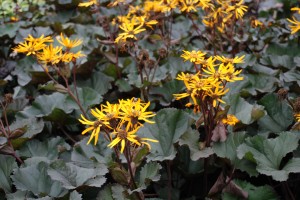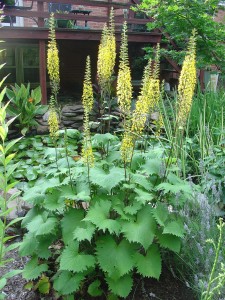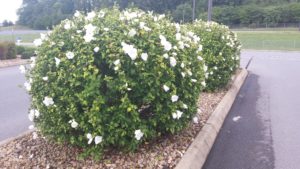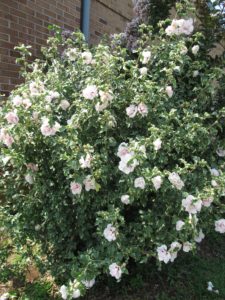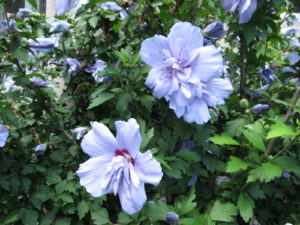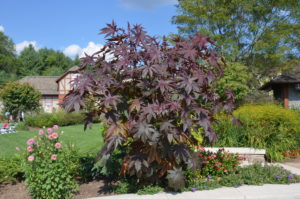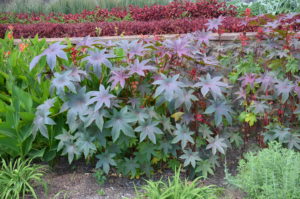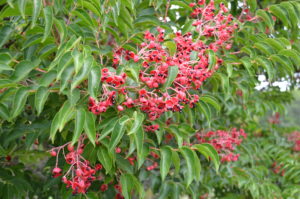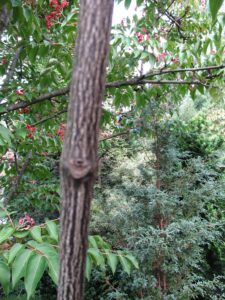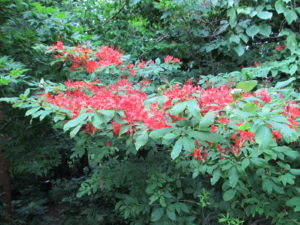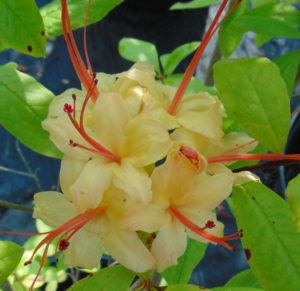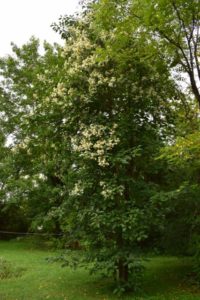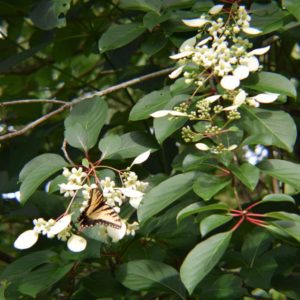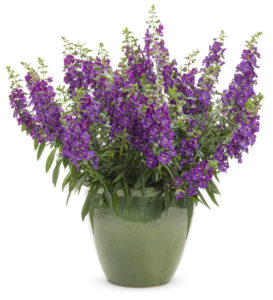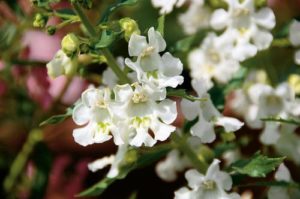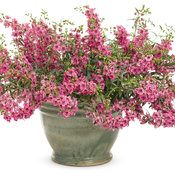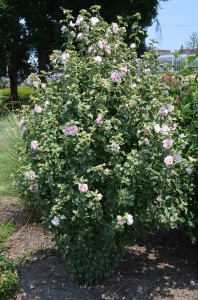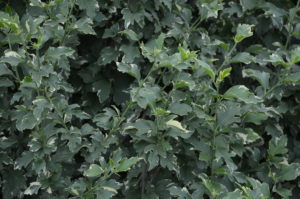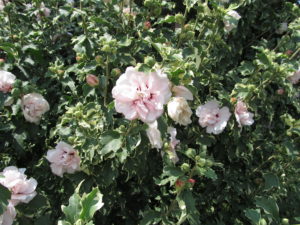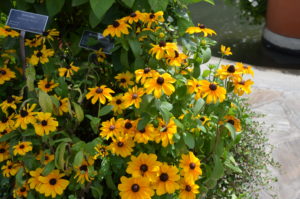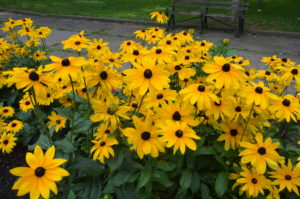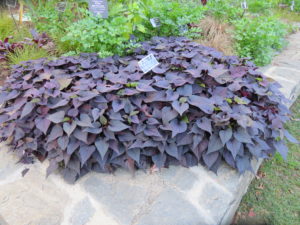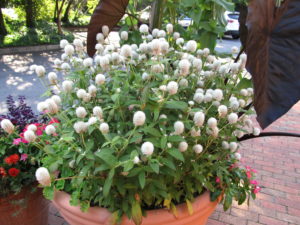Ligularias (ligs) are big leafy perennials whose roots must be kept constantly moist so that plants don’t wilt or “faint”. An established plant may tolerate several days in dry soil, yet the droopy foliage will recover from the water loss each night. Several species are tropical (under the genus Farfugium). Bigleaf ligs (L. dentata) and narrow-spiked ligularias (L. stenocephala), aka “golden ray”, grow well in temperate climes (USDA hardiness zones 6 and 7).
Leaves of some varieties may size up to 15-20 inches across. Ligs often suffer from bouts of fainting in the mid-afternoon due to summer heat and water loss from transpiration. Plant may wilt even if the soil is moist. By early evening the leaves mostly recover.
Lig’s showy bright yellow or orange flowers arise above the foliage in early summer. You may opt is cut-off the flower spikes in favor of lustrous 20-inches wide, coarsely tooth round foliage. Ligularia ‘Marie Britt Crawford’ is one such variety. Narrow-spiked ligs produce bright yellow or orange flower spikes, 2-5 inch flowers and 18-24 inch racemes and triangular, deeply toothed leaf margins.
Good site preparation and minimal annual maintenance will give ligularias a long life in a perennial garden. Set these perennials in moist, even soggy soil under partial sunlight, preferably morning sunlight. Ligs can be sited in boggy ground near a pond or a water garden; however, never submerge ligs in water. Provide lots of organic matter to the soil, a boggy location and this shade giant is luxurious.
Pest control is simply a matter of controlling slugs and snails from devouring the leaves, which create a “shot-hole” appearance in the foliage. Ligularias are propagated by division, generally in the spring or late in the summer. Clumps should be divided every 4-5 years.
Special Planting instructions: dig a hole large enough to accommodate a 3-5 gallon size container. Line the bottom of the hole with a plastic liner to retain moisture around the roots and to reduce the need of irrigation. Fill the hole with rich potting soil or a soil mix containing high amounts of humus or compost.
Leading Temperate Varieties:
L. stenocephala ‘The Rocket’ – tall 4-6 feet high narrow spikes of bright-yellow daisy flowers on purplish black stems and jagged-edged green leaves.
L. stenocephala ‘Baby Rocket’ – compact 2 1/2 – 3 foot selection above with large, serrated, dark green leaves and a bouquet of mustard-yellow floral spikelets on multiple chocolate stems.
L. dentata ‘Desdemona’ – rounded dark-green leaves with a purple backside; tall stems bear clusters of bright golden orange 3-3½ inches daisy flowers.
L. dentata ‘Orthello’ – large, rounded dark-green leaves with a purple underside; tall 3-4 feet tall floral stems bearing clusters of bright golden orange 3-3½ inches wide daisy flowers.
L. dentata ‘Britt-Marie Crawford’ – large, glossy, purple-black leaves and bold daisy-like orange-yellow flowers.

